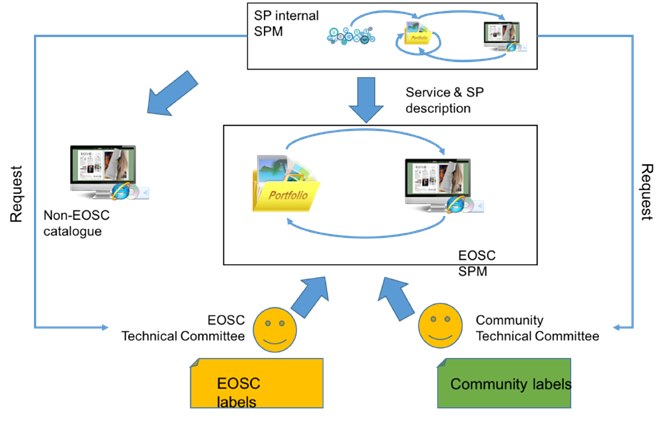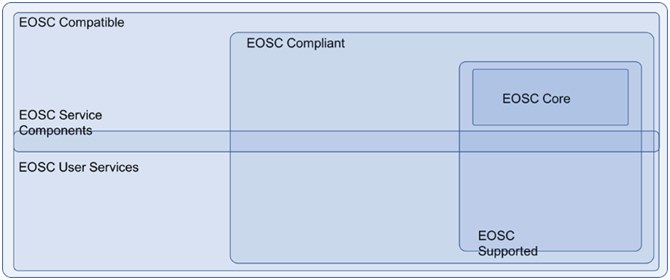EOSC Service Portfolio; an open but controlled Service portfolio that federates geographically distributed services, tools and FAIR data to support research and education.
Base model description
In the EOSC Service Portfolio Management (SPM) process, the Service Provider (SP) is in charge of every step of the process. As indicated in figure below, it is assumed the SP has its own internal SPM process, using an ITSM standard.
- The SP can choose to enter a service into the EOSC Portfolio, for which it needs to comply with minimal portfolio requirements.
- If there is dispute on the quality of the description of the service, the EOSC Technical Committee will decide whether it can be included.
- Once the service is in the EOSC portfolio, the SP can choose to expose the service through the EOSC catalogue. On modification of the service, the SP needs to update the information in the portfolio and catalogue accordingly. When the SP decides to no longer offer the service, the service can be removed from the catalogue but stays in the portfolio.
Establishing service quality
To establish service quality, the EOSC will rely on a system of labels, some of those are managed by EOSC itself, while others are managed by communities. Applying for a label (which acts as a sign of quality) is always triggered by the service providers.
EOSC labels are managed by the EOSC technical committee and provide quality indications that are applicable to a large variety of services, like e.g. uptime. Community specific labels are managed and maintained by specific communities, and could e.g. be indicative of a server provider’s ability to deal with sensitive data. This system of labels ensures that services of varying degrees of maturity can be included in the EOSC.

Layout of the EOSC SPM process
Service types
The EOSC portfolio management methodology will oversee a wide range of services and service providers. Because of this diversity, a separation of service types is proposed. Services and their providers are grouped according to the target audience of the service in question.
EOSC services are divided into following types of services:
- “End-user Services”: services used directly by scientists
- “Service Components”: intermediary services that will be built on top of or combined to create new end-user services
- “EOSC Supported” services: developed by or commissioned through EOSC
- “Core Services”: services that underpin the EOSC

Overview of EOSC service types
